Thai Omelet: The Ultimate Comfort Food
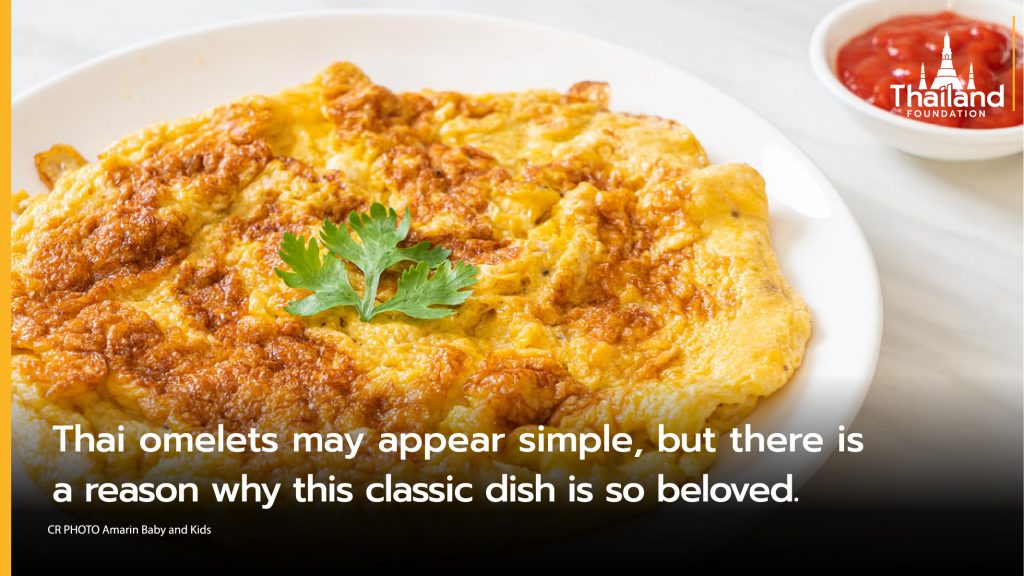
When you ask your friends or family what they want to eat, they usually say “อะไรก็ได้” (Arai Kor Dai), which means “anything is fine.” This is often a universal problem everyone faces regardless of nationality and culture. Oftentimes, we default to go-to dishes like Thai holy basil stir-fry, fried rice, or noodles. However, among all the other comforting, simple, quick, and affordable dishes, none could beat the humble yet mighty Thai-style omelet or Kai Jeaw (ไข่เจียว). It is the comfort dish that every Thai is familiar with since they were young. With Thai omelet, there are more possibilities than you could ever imagine. Despite being a simple dish, it’s guaranteed you will never get tired of it even if you cook it daily!
What is a Thai omelet?
So what’s the meaning of Kai Jeaw? Kai means egg in Thai, while the word Jiew is an adjective borrowed from the Teochew dialect, 焦, meaning burned food, or food cooked with heated oil. This is usually cooked with a Chinese metal pan or wok, which functions better in transferring heat than the widespread clay pots used in Southeast Asia. Evidence of the widespread usage of woks was found in a sunken merchant ship near Khram Island, Chonburi, in 1975. This signified the influence of Chinese culture and cuisine in the Southeast Asian region, including Thailand.
While there’s a universal understanding of an omelet, its appearance, texture, and taste usually vary in different countries. According to the Sai Yaowapa royal palace cookbook, when making a Thai omelet, one needs to whip the eggs until they are mixed before you “jeaw” it. When “jeawing,” one shouldn’t flip the eggs, but instead use the spatula to lever up the side of the pan to allow uncooked eggs to flow out and leave it until it turns yellow, fold them into two and then put them in the plate.
The Thai omelet is made of a beaten egg fried in the pan with various ingredients depending on the individual’s recipe. It is crunchy yet fluffy, golden-brown pancake-like yet rich and savory. In addition to their main ingredients like oil, fish sauce, eggs, and soy sauce topped with coriander, Thai omelets can be cooked with any additional ingredients you’d like to add. For example, many Thai households cook Thai omelets with minced pork, while others cook them with Thai chilies and onions. Some even put seafood in the omelet such as shrimp or crab. For little kids, they like Kai Jeaw with crab sticks or sausages.
Another distinct characteristic of the Thai omelet is that it is a dish for any meal of the day, unlike its Western counterparts, where most omelet is usually served as a breakfast or light supper. The Thai omelet is traditionally served with rice and a dipping sauce such as chili fish sauce, ketchup, or sriracha.
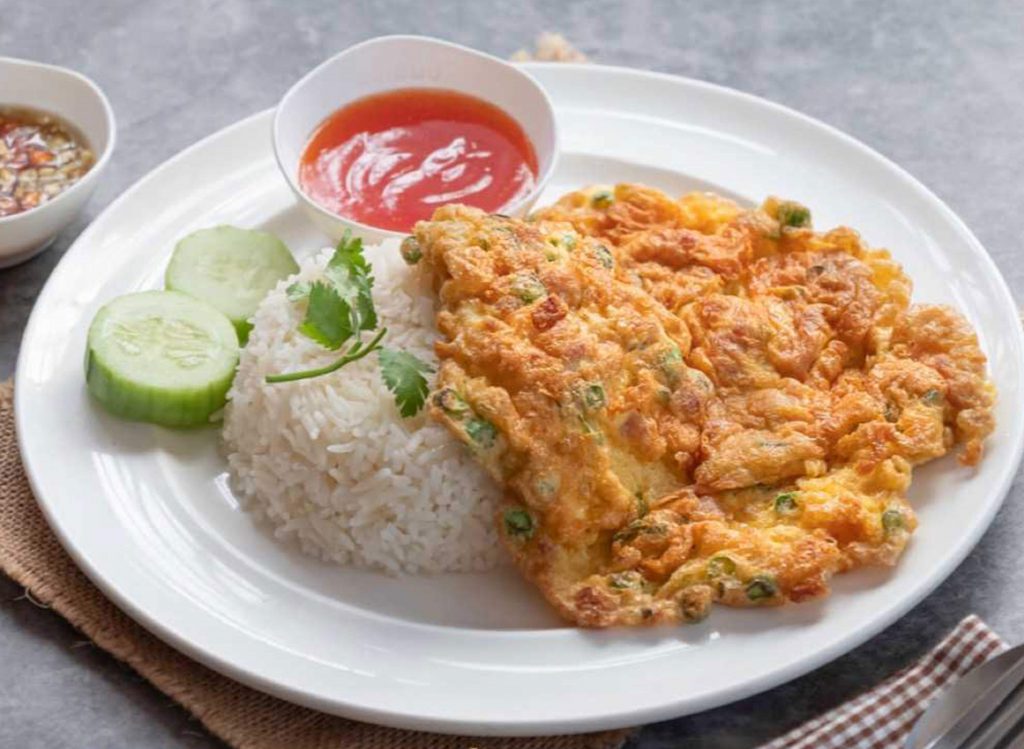
(Photo Credit: Bann Kaijeaw Songkreung )
How to cook
As mentioned, a rice plate with a yellow omelet on top might look basic, but who says there is only one way you can enjoy it. With just a little creativity, if you try putting other ingredients in the mixture, whether it is minced pork, shrimp, or vegetables, this plain-looking dish might not be as dull as you imagine! There are only a few steps needed when it comes to cooking Thai omelets. Firstly, you will need these ingredients (which you would probably already have in your fridge):
- a couple of eggs
- fish sauce
- salt
- cooking oil
- optional ingredients (any add-ons you like!)
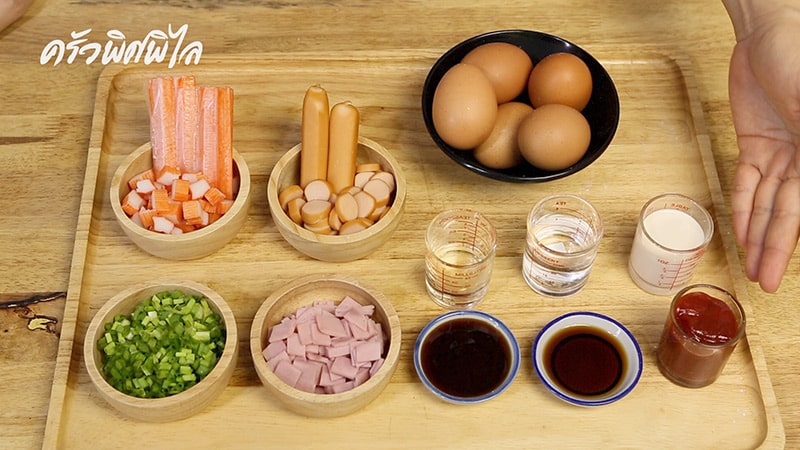
(Photo Credit: ครัวพิศพิไล)
Next, whip the eggs and add a few fish sauce and salt droplets to make it as salty as you like. Meanwhile, you can pour cooking oil into a wok or a pan and let it heat up. You will need a deep frying pan that can store a pool of oil. Once the oil is hot, turn the heat down a little bit and pour the egg mixture into the pan. After leaving it stir-fried in the oil for twenty to thirty seconds, you can flip it and let the other side of the omelet cook. When the omelet turns golden-brown, your Thai-style omelet will be good to go. And that is the basic version of the Thai-style omelet. You can serve it on top of a steaming bowl of rice.
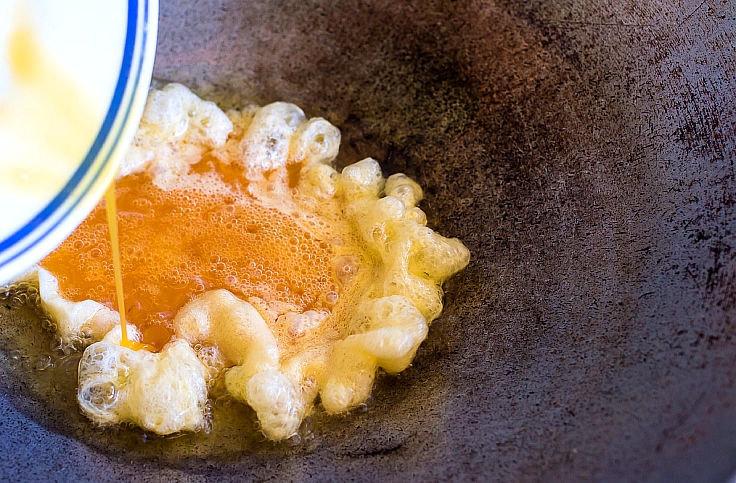
(Photo Credit: Michelin Guide)
Here are some tips for designing your own Kai Jeaw:
- Add flour to make your omelet maintain its shape and not deflate. But be aware that this will decrease the softness of your Thai omelet.
- Use a colander before pouring the egg into the hot oil to make the egg drips crunchy.
- Add water or lime juice to create fluffiness to your omelet.
Despite being a simple dish, a Thai omelet can be turned into a complex dish whether it is Michelin starred or even a royal cuisine meal. Here are some examples of popular Thai-style omelet dishes in various variations. At Jay Fai Street Food Stall in Bangkok, they serve one of the best Michelin star Giant Crab Omelet that comes in a burrito-looking style packed with succulent crab meats inside and served with a sriracha sauce.
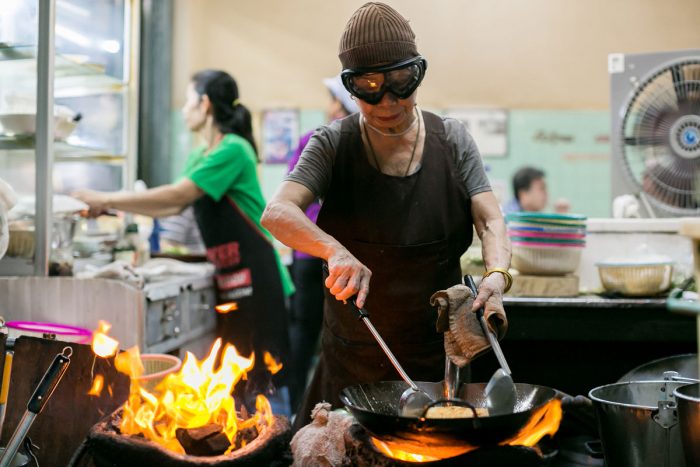
Jay Fai
(Photo Credit: MThai)
On the other hand, if you want to go for more vegan-friendly options, you can also try adding vegetables like Cha-om (ชะอม) or acacia leaves to your egg mixture. This is a Thai aristocratic or royal cuisine recipe that gives an aromatic, herbal scent of acacia leaves that mixes well in the omelet. This menu also pairs well with shrimp paste chili dip and will give your omelet a more intense spicy, and funky taste that completes your savory experience.
On top of that, you can even recreate dishes with a Thai omelet. For example, Thai omelet with Gaeng Som (sour curry with tamarind paste), Gaeng Jued Kai Jeaw (clear omelet soup with minced pork), or Thai stuffed omelet that packs with chunky meats inside, and many more!
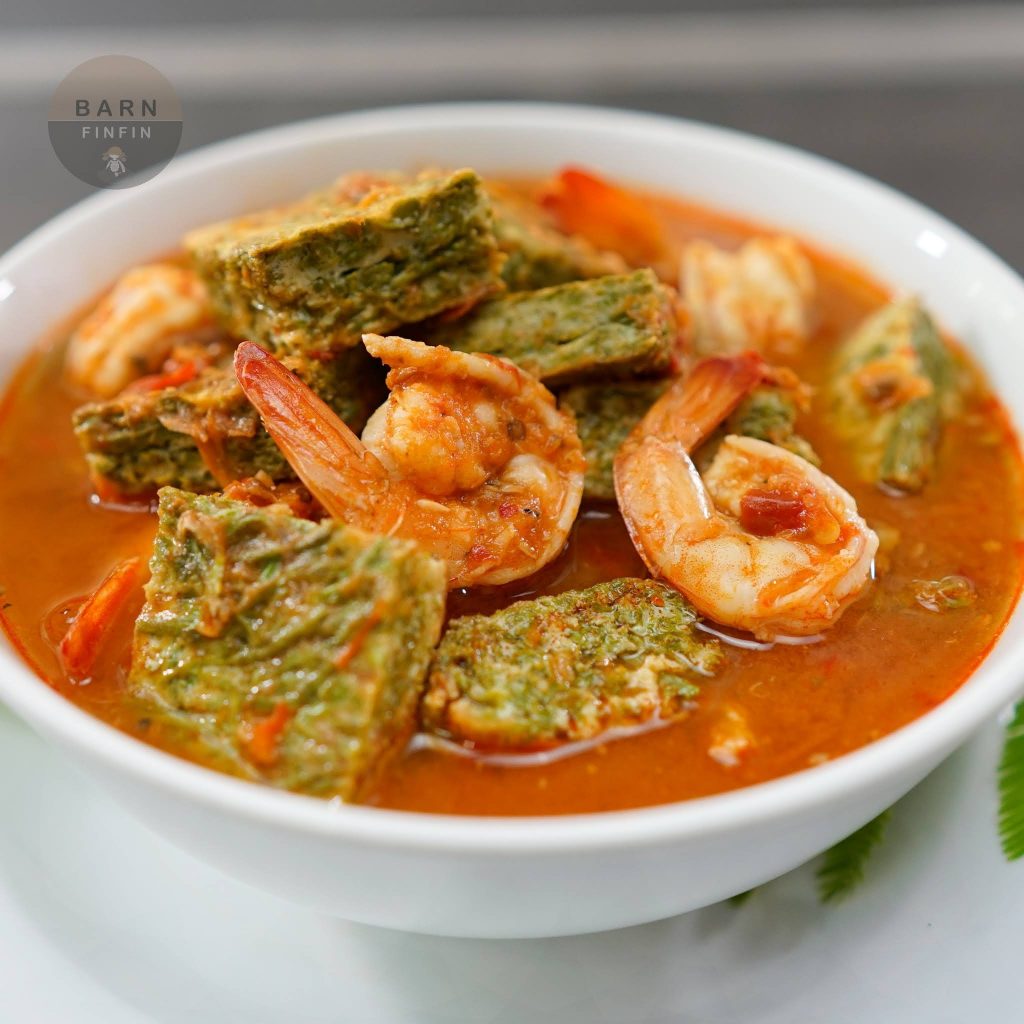
Thai omelet with Gaeng Som
(Photo Credit: pstip )
Why are Thai omelets so popular?
Firstly, Thai omelets are also very accessible with affordable prices to everyone regardless of their class, social status, gender, or nationality. The Thai omelets also represent the openness of Thais. As mentioned, Thais embraced the Chinese culture. We learned how to “jeaw” which we later combined with the Thai cooking style, bringing about nowadays Thai omelet. It also represents the welcomeness of Thais to any culture, especially when enhanced by globalization. There are endless possibilities that you can integrate any ingredient into the dish and still goes well with any combination!
In the Northeastern and Northern regions, people usually eat Thai omelets with sticky rice, while other regions eat it with Indica rice instead. Local households also like to put some plants or herbs they could find around their home in the omelet. Some prefer sweet peas in Thai omelets; others might choose red ant eggs!
On the other hand, many people nowadays put cheese in the omelet, integrating a Western ingredient into Thai cuisine. Some are even more creative by putting cheese omelets in instant Tom Yum noodle cups to increase flavor and spice.

(Photo Credit: specialthailand)
Basic but delicious; this is why Thai omelet has always been one of the most treasured dishes Thai people always turn to. It is the kind of dish that would be available in every restaurant although it might not have been featured in the menu book. The sight of a warm bowl of rice with a freshly cooked omelet on top of it, whether in a local stall or a dinner table, will always create a sense of comfort in the dish you can eat anywhere, anytime, and with anything. Now, don’t you want to try and find your favorite combination of Thai omelets?
Sources
- https://krua.co/cooking_post/chefnanmakesthaiomelet/
- https://many-menu.com/archives/1093
- https://www.silpa-mag.com/from-the-fingertip/article_11364
____________________________________________________________________________________
Author: Pattanun Arunpreechawat
5 September 2022


